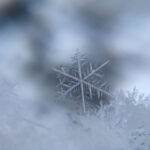Ever wondered why your shots are over or under-exposed even though you have set the proper settings for the light meter readings? Pye from SLR Lounge has the answer:
Over and under exposure tends to be the result of the meter taking readings from the wrong things. If you set your camera to spot metering, you can tell your camera to take readings from whatever you want.
How Does Spot Metering Work?
Spot metering uses 3 to 5 percent of the center of the metering sensor (which is often more accurate and more sensitive) to give you a reading from the object that you point it at. So if you want perfect skin exposure, set your metering mode to spot metering with your camera in manual mode. Then, aim your center point on the skin right under the model’s eye and take a reading. Adjust your settings based on the skin tone, focus, and shoot. The skin will be always perfectly exposed.
Spot metering also helpful when you combine flash with ambient light. Say you want to expose properly for the sky and fill in the rest with flash. Set your camera to spot metering, meter for the sky, set the exposure, and the sky will be properly exposed; the rest is up to the flash to fill in with light.
“Just remember…when you’re using the spot meter, do not use assisted or automated modes, because it’s going to create all sorts of funky exposures depending on wherever that spot meter is.”
Like This Article?
Don't Miss The Next One!
Join over 100,000 photographers of all experience levels who receive our free photography tips and articles to stay current:







This “photographer” should quit trying to teach.
(1) Anyone who knows about photography knows that spot metering works only when you point the camera at something which has “average grey” tonality (around 12% to 18%). So we have to assume he’s aiming at beginners.
(2) To suggest that only manual mode should be used whilst spot metering is also rubbish. For example, Av mode will set the camera to exactly the same shutter speed as the photographer would (0Ev) in manual mode when pointing the camera at a 18% tonality subject – unless they are using exposure compensation (which one could do in any mode to compensate for a light tone (+1Ev, say), in which case you’re back to knowing the shortcomings of camera metering – hence
(3) the text “Just remember…when you’re using the spot meter, do not use assisted or automated modes, because it’s going to create all sorts of funky exposures depending on wherever that spot meter is” reiterates the photographer is destined to confuse beginners.
If you are going to publish an article please find someone who knows what they are talking about first.
Caucasian skin is typically, approximately 1 f/stop too bright for a true reading; leading to an underexposure of about the same 1 f/stop.
If you look at the illustrating image you will see an underexposed result that adequately illustrates my point, rather than the article.